John Constable.
In Flatford Mill from a Lock on the Stour he uses blues, white and a grey-pink type of colour.
I think the drawings below are the most helpful of my findings, because they show ways of drawing clouds using line. Twisting lines combined with hatching to fill dark areas. Different directions and lengths of hatching to describe shapes of clouds.
These drawings are interesting because they show the spaces of sky between clouds. It seems like a good way to approach the study of cloud formations.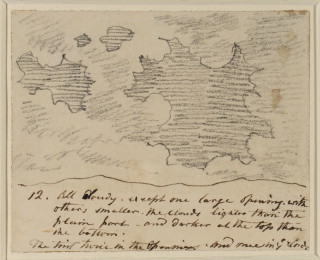
Below is a good example of how to use colour to draw storm clouds or dark evening clouds. The landscape or seascape is dominated by the sky which takes up nearly two thirds of the painting. The beach is clearly a good place to draw clouds. I also think that this drawing is good because it shows (I think) a sky filled with cloud, so there are not spaces of sky between the clouds, just variances in the darkness of the clouds.
 Below is a much clearer sky, again the sky takes up most of the painting, but it is less dominant because it is very pale blue. The clouds are wispy and feint, with small shadows underneath them.
Below is a much clearer sky, again the sky takes up most of the painting, but it is less dominant because it is very pale blue. The clouds are wispy and feint, with small shadows underneath them.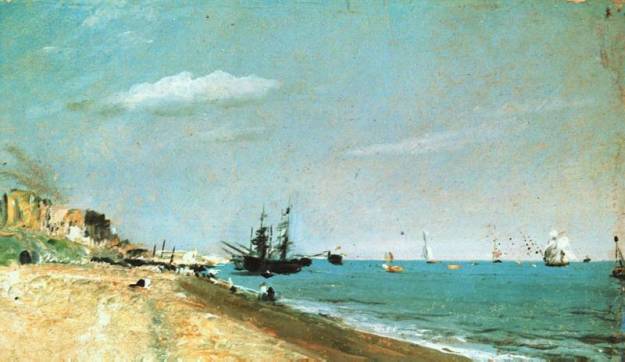
Below is another example of the way you can use colour to draw clouds. The colours are vivid in a sunset, the clouds are transformed to a purple while the sky is pinks and yellows and orange. It is another way to view the sky. Also, if you were using a pastel or a crayon for this drawing you could use the length of it to make the marks of clouds like this, instead of a brush.
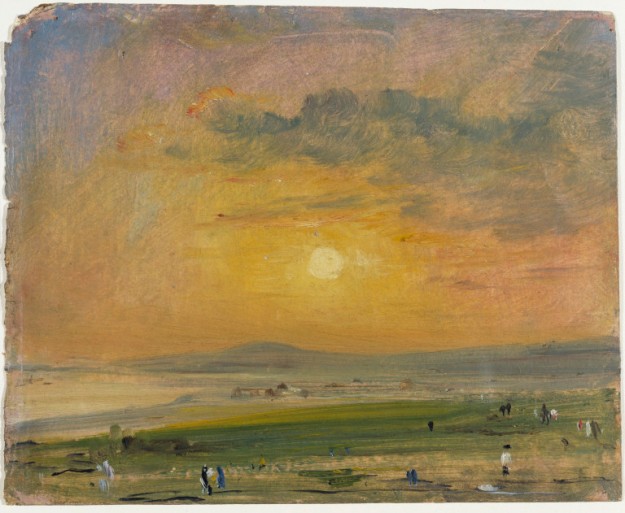 Constable’s drawings and paintings show me a range of techniques with which to draw clouds and help me to look at clouds and skies in terms of marks and lines. His pencil drawings especially help me to understand how to draw clouds using only line.
Constable’s drawings and paintings show me a range of techniques with which to draw clouds and help me to look at clouds and skies in terms of marks and lines. His pencil drawings especially help me to understand how to draw clouds using only line.
Alexander Cozens.
The way Cozens uses line to draw the sky is remarkable. I came across his drawings when looking into the art of Constable. They are very controlled in the way they are produced. I imagine it would take a long time to draw like this, and so you would need to draw on a very still day.
His style of hatching is fascinating. The lines weave in and out across each other. It is a good way of creating different tones in an organic way, without sharp edges.
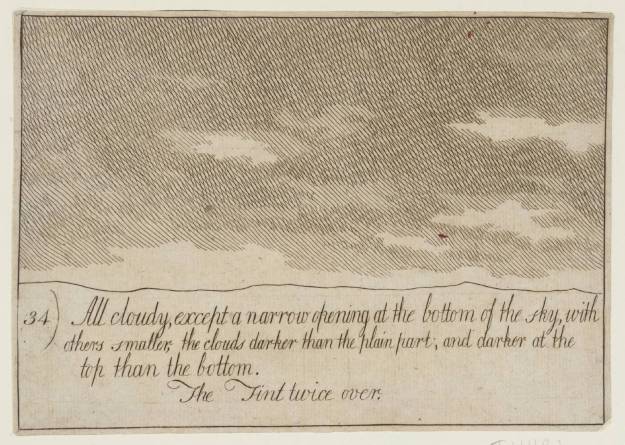
“34. All Cloudy, except a Narrow Opening at the Bottom of the Sky, with Others Smaller, the Clouds Darker than the Plain Part; and Darker at the Top than the Bottom. The Tint Twice Over null by Alexander Cozens” 1717-1786
It also seems like a good idea to draw a horizon line to put the sky into context.
I think these drawings are very effective. I don’t know if they billow, as the exercise I did asked me to try to draw. They do have a certain stillness about them.
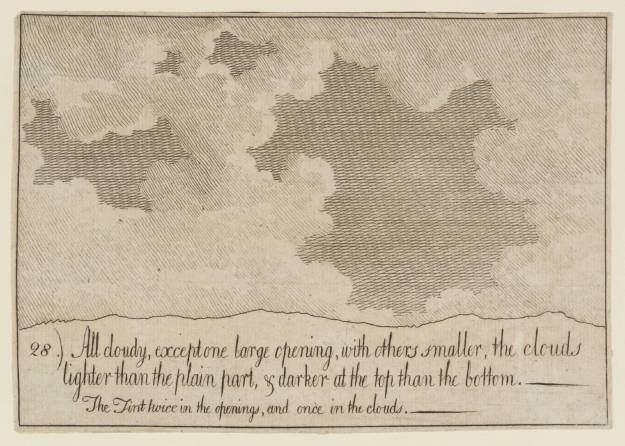
28. All Cloudy, except One Large Opening, with Others Smaller, the Clouds Lighter than the Plain Part, and Darker at the Top than the Bottom. The Tint Twice in the Openings, and Once in the Clouds
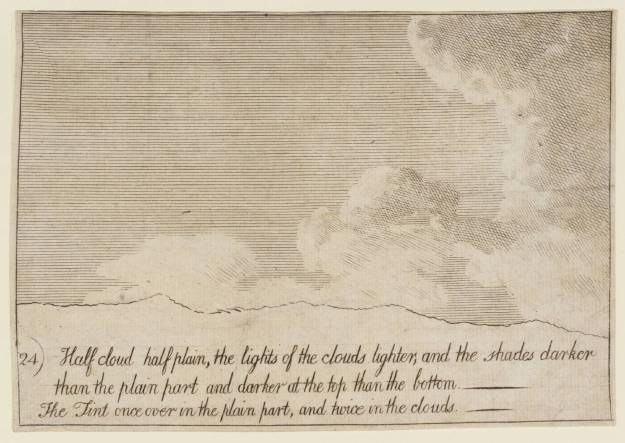
24. Half Cloud Half Plain, the Lights of the Clouds Lighter, and the Shades Darker than the Plain Part and Darker at the Top than the Bottom. The Tint Twice Over in the Main Part, and Twice in the Clouds
The drawing above is a good drawing – the sky is hatched instead of cross hatched, so it creates a different effect. The sky must have been brighter on this day.
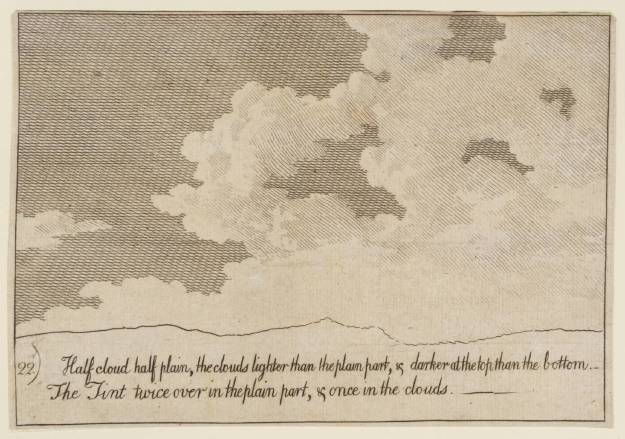
22. Half Cloud Half Plain, the Clouds Lighter than the Plain Part, and Darker at the Top than the Bottom. The Tint Twice Over in the Plain Part, and Once in the Clouds
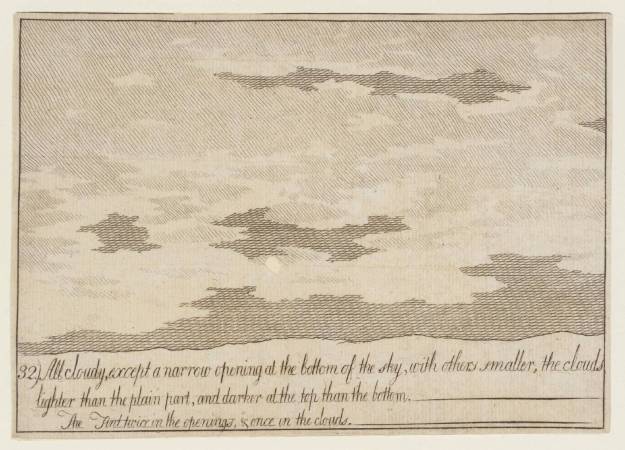
32. All Cloudy, except a Narrow Opening at the Bottom of the Sky, with Others Smaller, the Clouds Lighter than the Plain Part, and Darker at the Top than the Bottom. The Tint Twice in the Openings, and Once in the Clouds
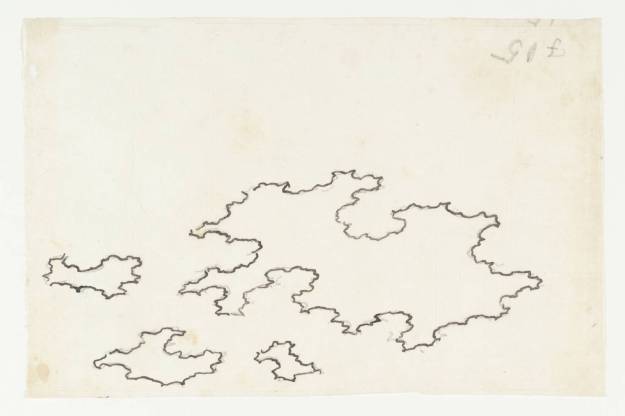
A Schematic Cloud Study http://www.tate.org.uk
Schematic Cloud studies – these are an interesting approach. I wonder if Cozens made these diagrams to work from for the hatched drawings? Because the woven hatched drawings look like they took a lot of time, and so it occurred to me that it would need to be a very still day for him to observe clouds for a long period of time.
(Schematic – (of a diagram or other representation) symbolic and simplified.)
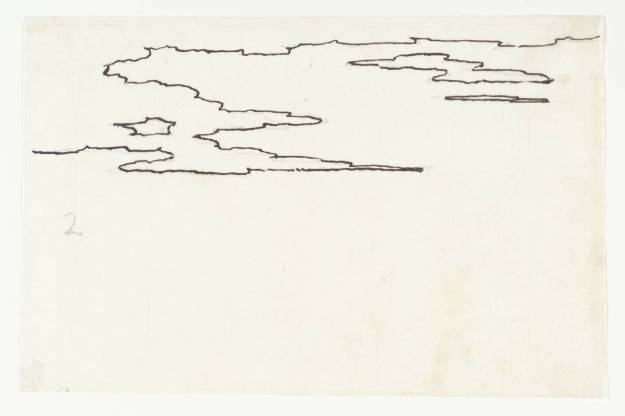
A Schematic Cloud Study http://www.tate.org.uk/art/work/T08048
It is useful to see these diagrams to see into the process of Cozens’ work. You can see the stages of observation and the collecting of information.
It has been very helpful to study the works of Cozens and Constable. Their ideas and approaches are fascinating.

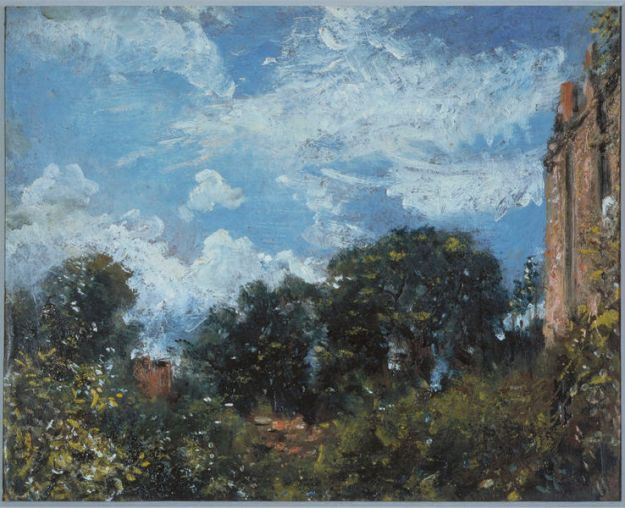
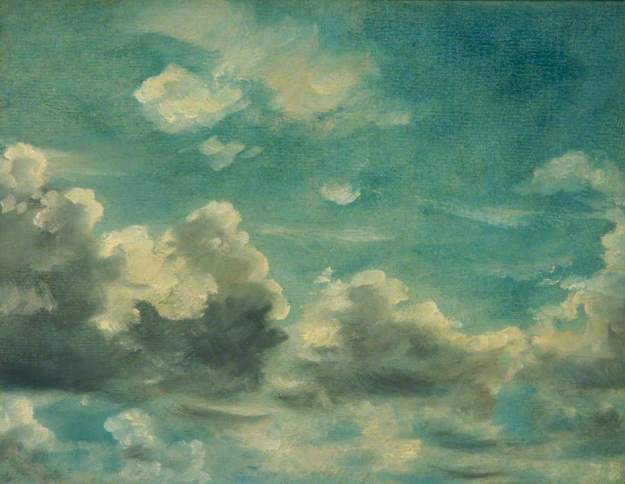
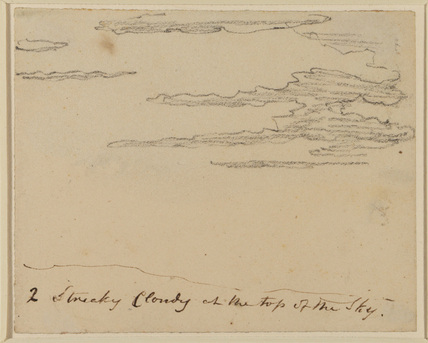
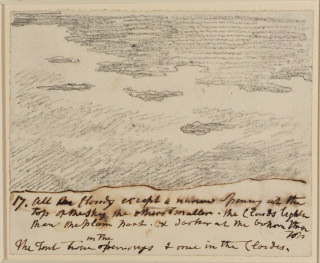
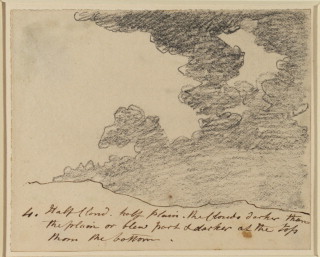

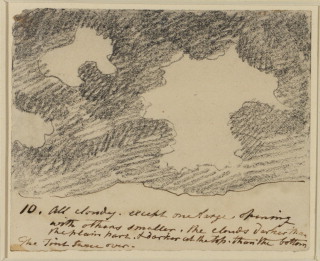
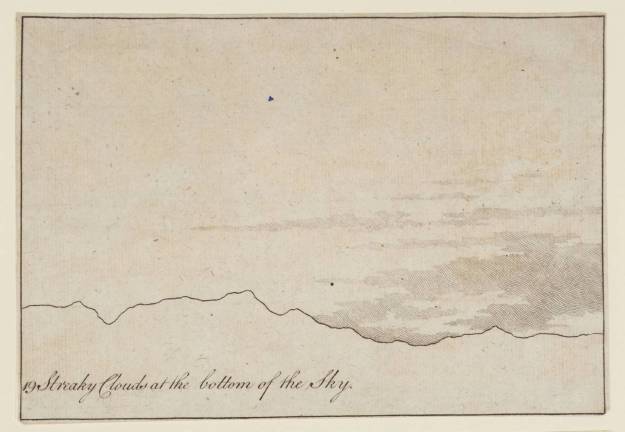

Pingback: Project: Landscape drawing | Eve's art